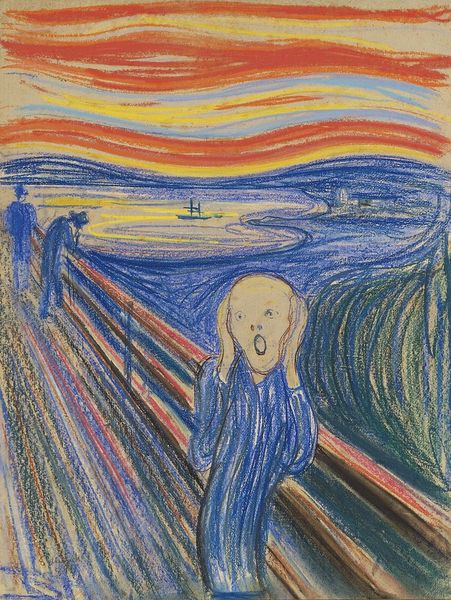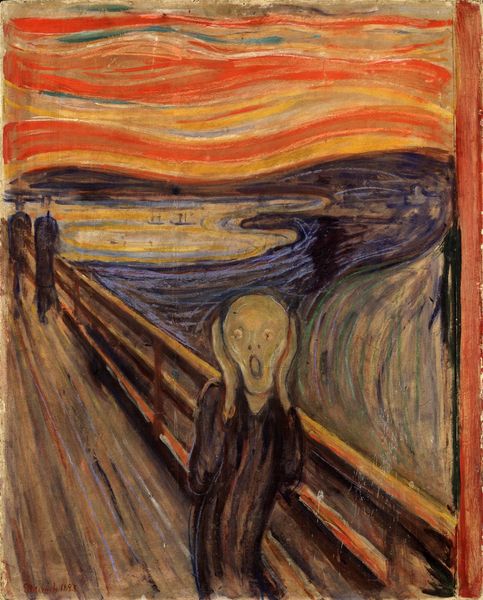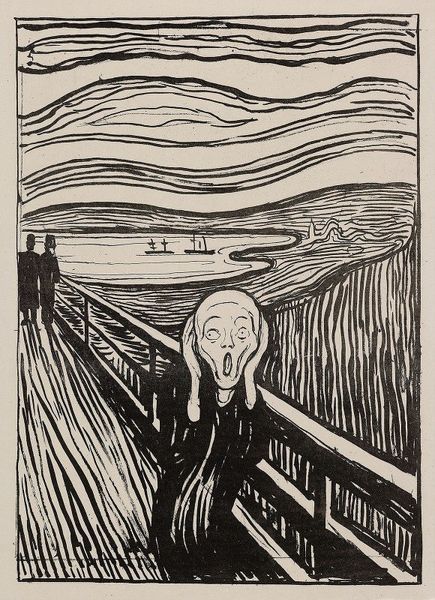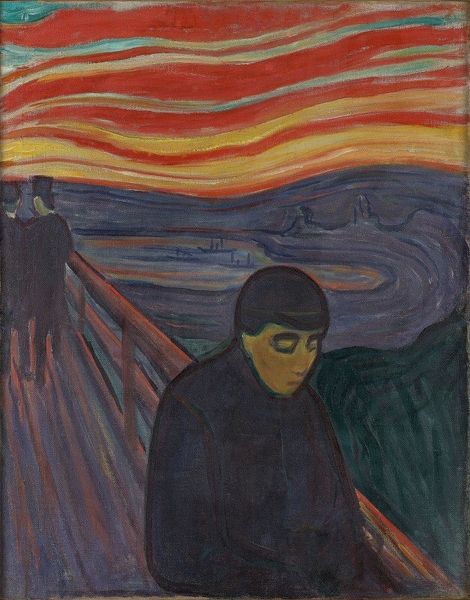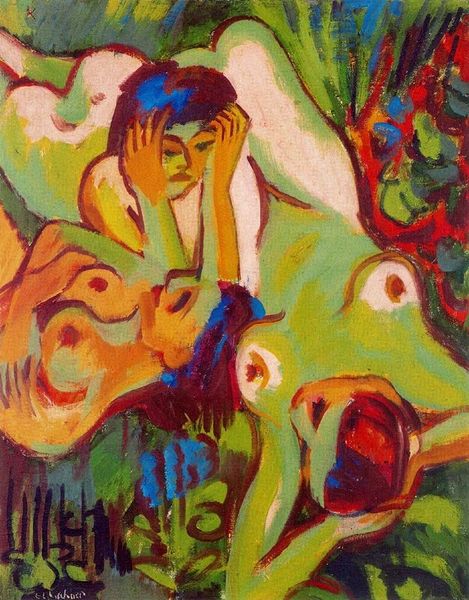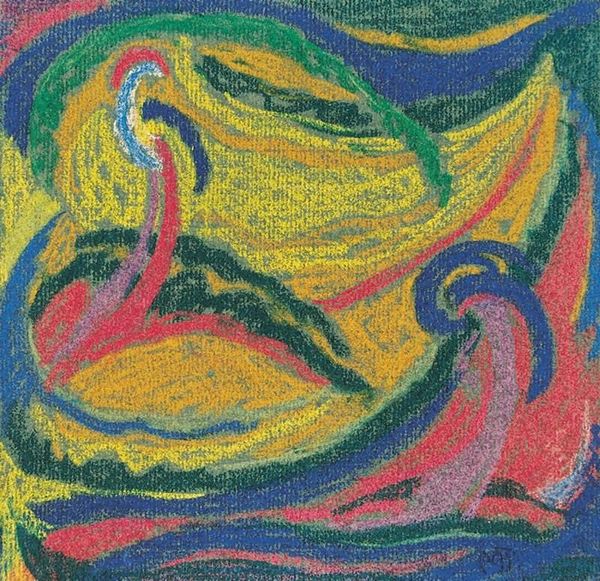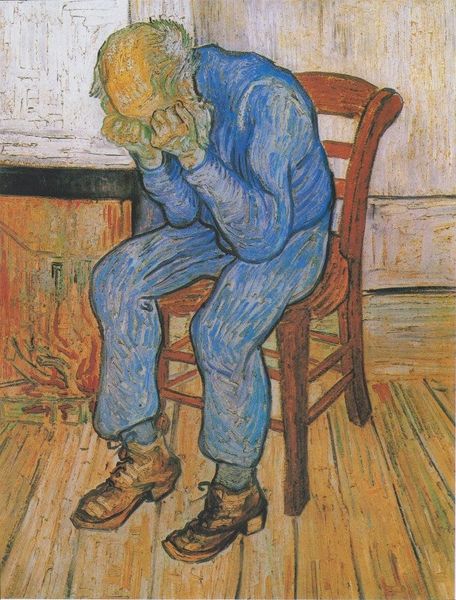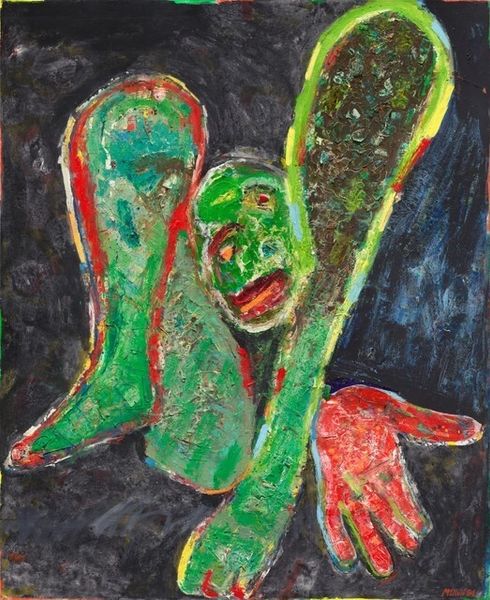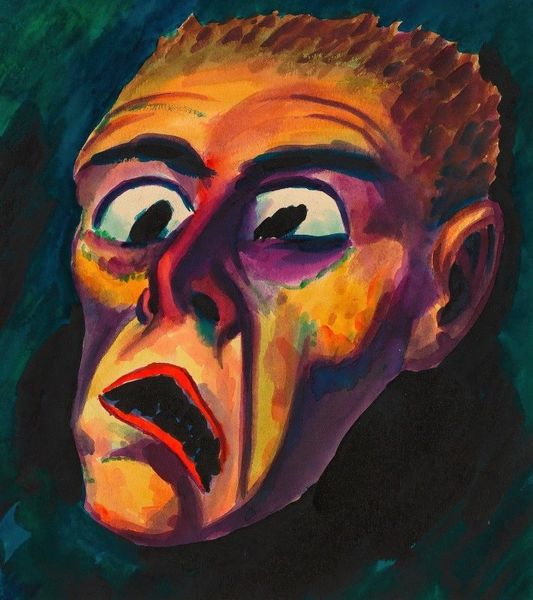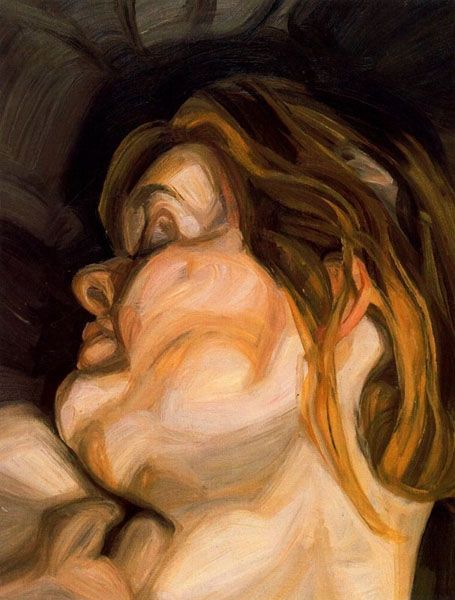
plein-air, oil-paint
#
portrait
#
plein-air
#
oil-paint
#
landscape
#
expressionism
#
psychedelic-art
#
symbolism
#
cityscape
#
expressionist
#
monochrome
Copyright: Public domain
Editor: So, this is Edvard Munch’s “The Scream,” painted in 1893. It’s hard to miss. The way the colors warp and the figure is so… angular. It's definitely unsettling. What kind of cultural significance do you think we can find in it? Curator: Unsettling indeed! What strikes me first is how that central figure has become almost universally recognized as a symbol of anxiety, even existential dread. But let's dig deeper. Munch wasn't just painting a personal feeling; he was tapping into a wider cultural nerve. Do you notice how the undulating lines of the landscape almost mirror the figure's emotional state? Editor: Yeah, it's like the whole world is screaming along with him. It seems almost childish but I guess that means primitive in terms of human symbolism? Curator: Exactly! Those lines aren't just decorative; they're echoing and amplifying the internal turmoil. And consider the period: the late 19th century, a time of massive social and technological upheaval. Traditional certainties were crumbling. Could the scream be a visual manifestation of this collective anxiety, a shared sense of alienation? Editor: I see what you mean, a visual symbol for society itself... almost like society becoming uncivilized. It makes you wonder what future archeologists will learn about us! Curator: Precisely. It's a potent reminder that images speak volumes, reflecting not just personal experiences, but the deeper cultural currents of their time. It reminds us about how a basic idea like screaming can resonate with almost anybody. Editor: I never thought about it that way, viewing art from the context of mass anxieties. That is very fascinating indeed!
Comments
No comments
Be the first to comment and join the conversation on the ultimate creative platform.
